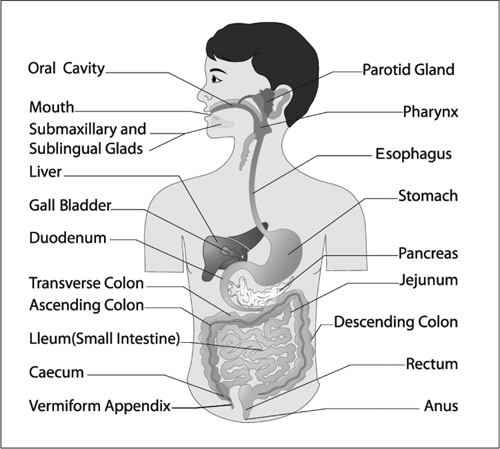Anatomy: Animals InsideDigestion |
How do humans digest their food? |
Humans have a special digestive system that allows the body to digest (break down large food particles into smaller molecules) and absorb nutrients. For example, fats are broken down into glycerol and fatty acids and proteins into amino acids; vitamins and minerals are small enough to be absorbed without being digested. Overall, the average length of the human digestive tract—from the mouth to the anus, also called the alimentary canal—is about 30 feet (9.9 meters) and is lined mostly with smooth muscles (involuntary) that push the food through the body in a process called peristalsis. The following lists some of the major parts of the human alimentary canal:

The human digestive system
